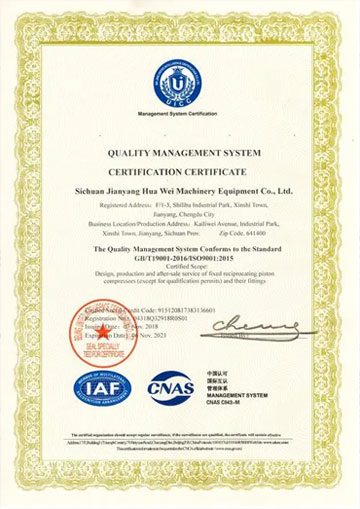

Choosing Self-Tapping Screws for Plywood Applications and Their Benefits
окт. . 20, 2024 21:52 Back to list
Choosing Self-Tapping Screws for Plywood Applications and Their Benefits
Understanding Self-Tapping Screws for Plywood
When it comes to woodworking, choosing the right fasteners is just as important as selecting quality materials. Among the various types of fasteners available, self-tapping screws are particularly favored for their convenience and effectiveness, especially when working with materials like plywood. This article will delve into the specifics of self-tapping screws for plywood, highlighting their benefits, applications, and tips for proper usage.
What are Self-Tapping Screws?
Self-tapping screws are designed to create their own hole as they are driven into materials, eliminating the need for pre-drilling in many situations. They have a sharp, pointed end that allows them to pierce through materials with ease. The unique thread design engages with the material, allowing the screw to cut through, while providing a secure hold. This feature makes self-tapping screws particularly advantageous when working with plywood, which is commonly used in furniture, cabinetry, and other woodworking projects.
Benefits of Using Self-Tapping Screws in Plywood
1. Time Efficiency One of the most significant advantages of self-tapping screws is the time saved during assembly. Traditional screws require pre-drilling to avoid splitting the wood, but self-tapping screws eliminate this step. This can dramatically reduce labor time, especially in larger projects.
2. Reduced Risk of Splitting Plywood is composed of multiple layers of veneer that are glued together, which can sometimes lead to splitting if not handled correctly. Self-tapping screws are designed to create a hole more efficiently, thus minimizing the risk of splitting the plywood during installation.
3. Strong Grip The threads on self-tapping screws provide excellent holding power, which is particularly important when fastening plywood. They can handle shear and tensile forces effectively, making them reliable for various applications.
4. Versatility These screws come in a range of sizes and materials, allowing you to select the perfect screw for your specific plywood application, whether it's for interior or exterior use. Coated options are available to resist corrosion and extend the life of the fastener.
Applications of Self-Tapping Screws
Self-tapping screws are versatile and can be used in numerous applications related to plywood. Here are a few common uses
self tapping screws for plywood

- Furniture Assembly Self-tapping screws are ideal for assembling furniture where speed and stability are crucial
. They are often used in the construction of chairs, tables, and cabinets.- Cabinetry When building cabinets or installing shelves, self-tapping screws can secure plywood sheets to frames, ensuring a tight fit without the worry of splitting.
- Wooden Structures In outdoor construction, self-tapping screws can hold plywood sheathing in place on roofs or walls, providing a sturdy base for further material application.
Tips for Using Self-Tapping Screws with Plywood
To achieve the best results when working with self-tapping screws in plywood, consider the following tips
1. Choose the Right Size Ensure that the screw size matches the thickness of the plywood. A screw that is too long can penetrate too far and cause damage, while one that is too short may not provide sufficient hold.
2. Use the Right Drill When driving self-tapping screws, a high-quality power drill with adjustable torque settings is ideal. This helps control the depth and ensures that the screw does not strip out the plywood.
3. Pre-drilling (if necessary) While self-tapping screws often do not require pre-drilling, in some cases—such as when working with thicker plywood or in precise assembly—it may be beneficial to create pilot holes. This can help guide the screw and ensure an even installation.
4. Test Fit Always perform a test fit on a scrap piece of plywood to gauge the screw's effectiveness before applying it to your final project. This can help you troubleshoot any potential issues before they arise.
Conclusion
Self-tapping screws are a powerful ally in the world of woodworking, particularly when it comes to working with plywood. Their ability to save time, enhance stability, and reduce the risk of damage makes them a preferred choice for both professionals and DIY enthusiasts alike. By following the tips provided and understanding the applications of these screws, you can ensure a successful and efficient woodworking project. Whether you're building furniture, shelving, or other structures, self-tapping screws will serve you well in achieving durable and reliable results.
Latest news
-
Premium Self Tapping Metal Screws: Strong & Easy Install
NewsAug.02,2025
-
Premium Fasteners Manufacturer | AI-Driven Solutions
NewsAug.01,2025
-
Hot Dip Galvanized Bolts - Hebei Longze | High Strength, Corrosion Resistance
NewsAug.01,2025
-
High-Strength Hot Dip Galvanized Bolts - LongZe | Corrosion Resistance, Custom Sizes
NewsAug.01,2025
-
Best Self Tapping Screws for Drywall - Fast & Secure Installation
NewsJul.31,2025
-
High-Strength Hot Dip Galvanized Bolts-Hebei Longze|Corrosion Resistance&Customization
NewsJul.31,2025

